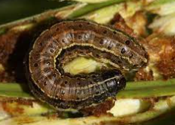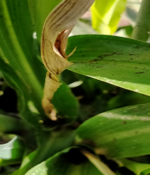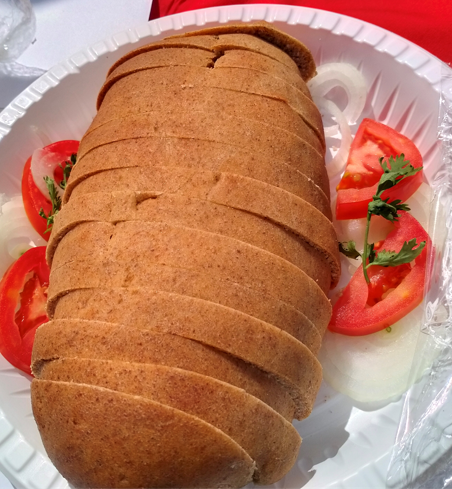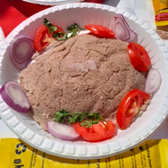Sorghum
Introduction
An important food security crop for the drought prone regions of Kenya. Sorghum does well in warm climates of temperatures between 25 and 32 degrees Celsius receiving annual rainfall of 420mm to 630mm per year. Sorghum prefers pH of 5.5-6.8 soils, being a cereal crop. It reliably grown in semi-arid regions where rainfall amount is even below 300mm per season depending on variety suitability. Thus sorghum crop is climate smart crop and gives yield range of 3-4 tons per hectare or 1.5-2 tons per acre. The crop thrives in well drained loam sandy soils, with a pH of between 5.5 and 7.5.
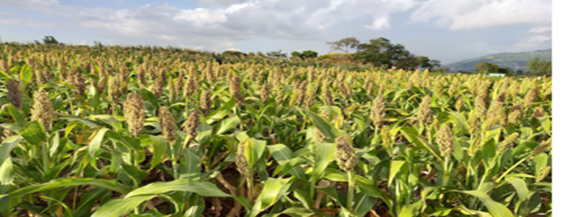
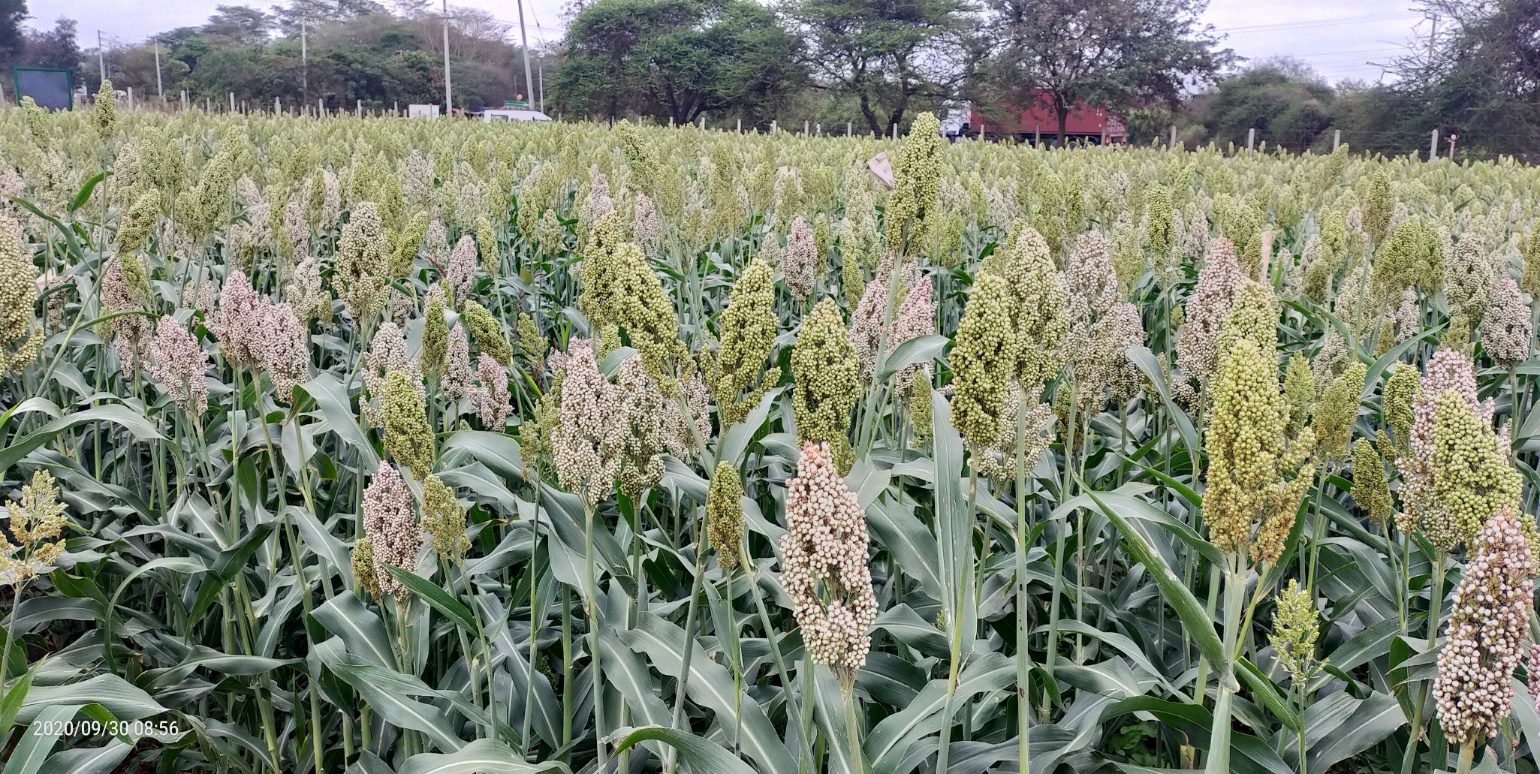
Gadam (R. Kisilu 2021)
- Altitude suitability: 250-1600 m.a.s.l
- Yield: Grain yield: 3 t ha-1
- Maturity: 2.5 -3 months.
Attributes:
- Good malting qualities.
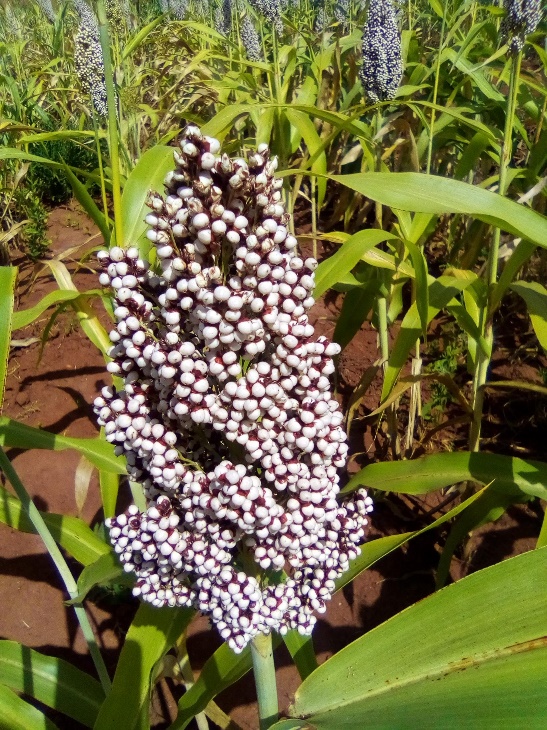
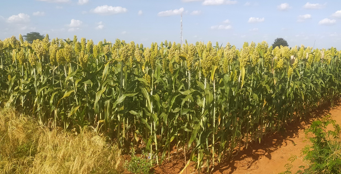
KARI-Mtama-1 (R. Kisilu 2021)
- Altitude suitability: 250-1800 M.a.s.l
- Yield potential: Grain yield: 4.5 t ha-1
- Maturity: 3.5 -4 months.
Attributes:
- White open pollinated variety (OPV).
- High malting quality.
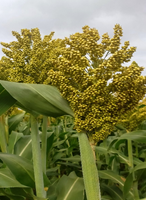
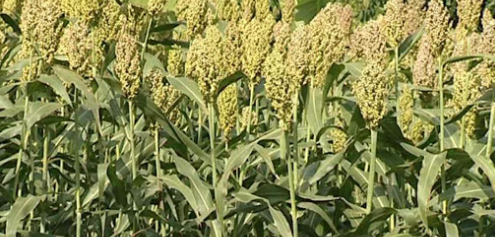
Sila (photo: Kenya Seed)
- It is suited for altitudes of 250-1800m.a.s.l.
- It is a dual purpose variety with grain yield of 2-4 t/ha, and fodder 4 t/ha.
Attributes:
- High malting quality.
- Good for human consumption and animal fodder.
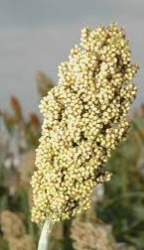
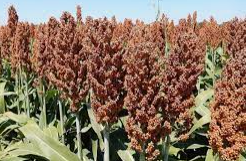
SC Smile (farmlinkkenya.com)
- It is suited for Lowland to medium. altitudes – Up to 1500 m. a. s. l
- Grain yield of 2.5 - 3 t/ha.
- The variety takes 110 days to maturity.
Attributes:
- It suitable for malting.
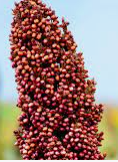
Kenya Seed Co.
EUSH 1 Hybrid
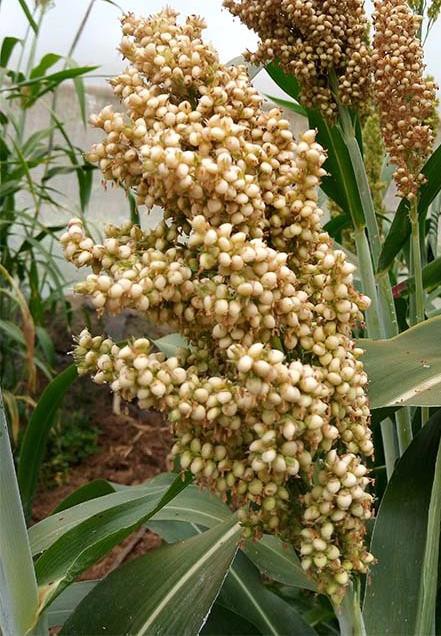
- Suitability: lower midland (1300-1500 M.a.s.l).
- A high yielding hybrid: 4.5 t/ha with early maturity (3 months).
Attributes:
- Grain is suitable for malting and brewing.
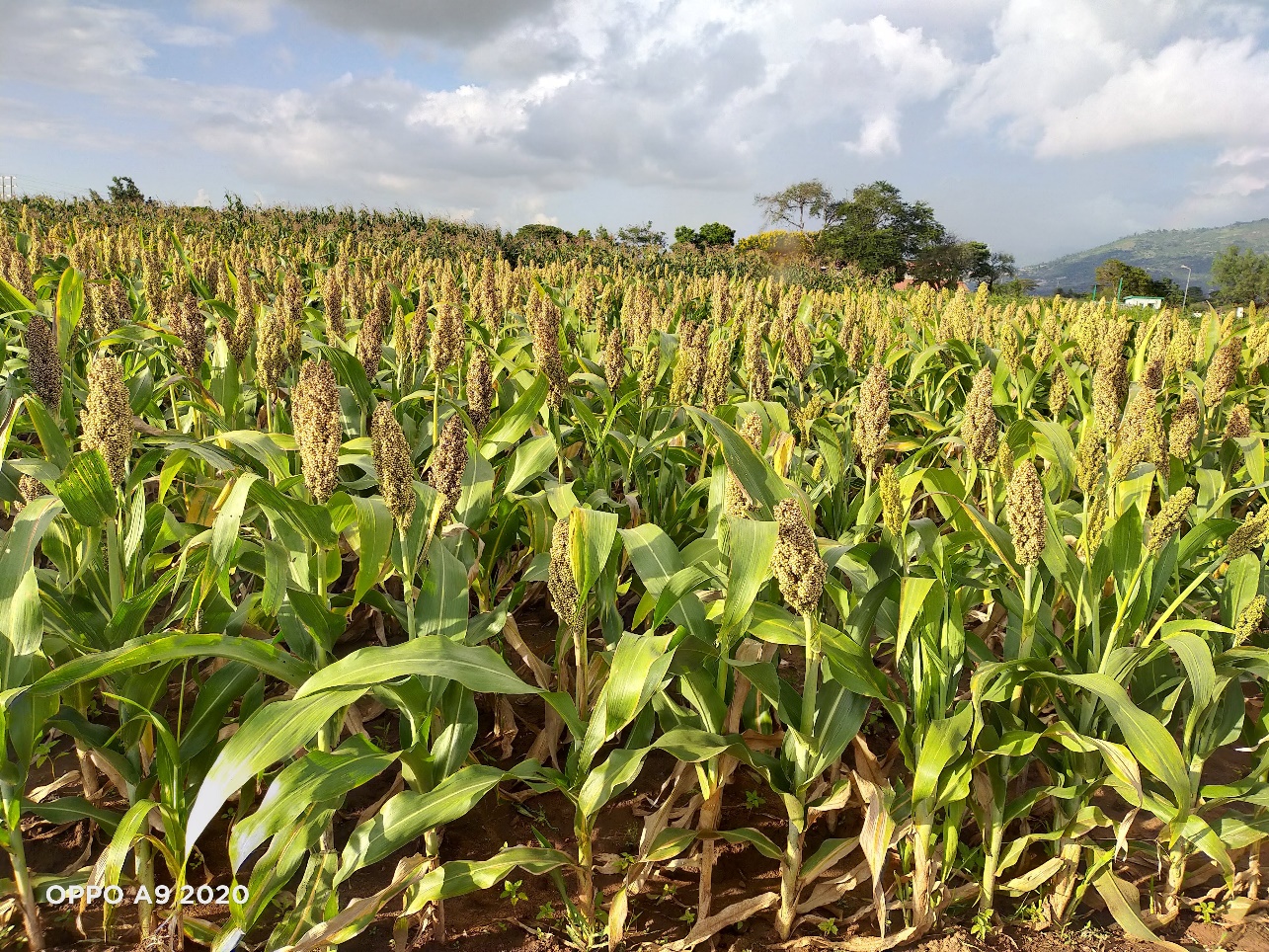
KM 32 -1 (Kamani) (Photo: R. Kisilu 2021)
- Suitability altitude: 500-1100m a.s.l and dry cold zones and some humid zones.
- Yield levels: 2.7-3.8 t per acre.
- Maturity duration: 3 months
Attributes:
- Short and uniform for mechanized harvesting.
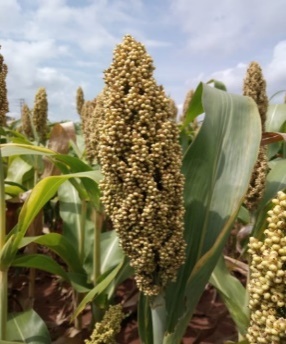
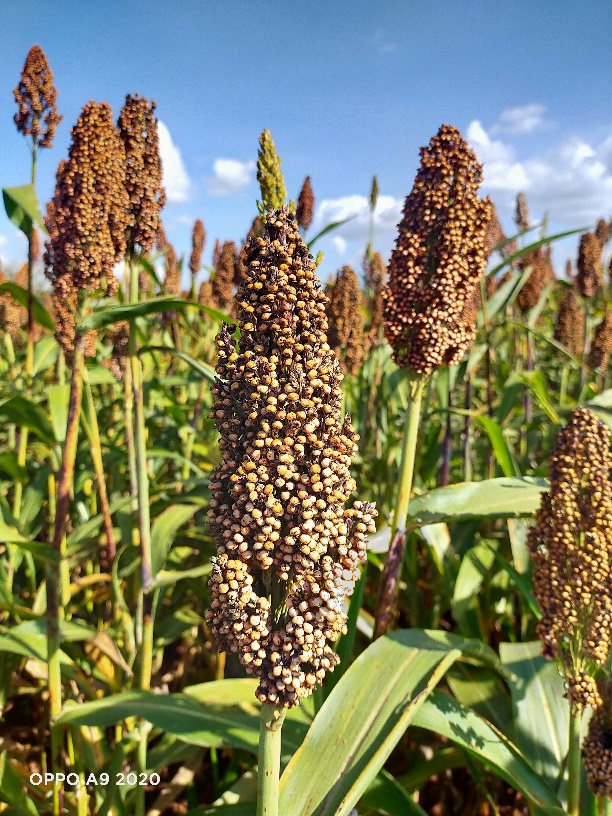
Seredo (R. Kisilu 2021)
- Ecological suitability: 500-1750 m. a. s. l
- Yield 1.4 tons per acre (2.7 t/h).
Attributes:
- Not highly damaged by birds due to tannin content in the grain.
- Brown OPV sorghum, with wide adaptation in most regions.

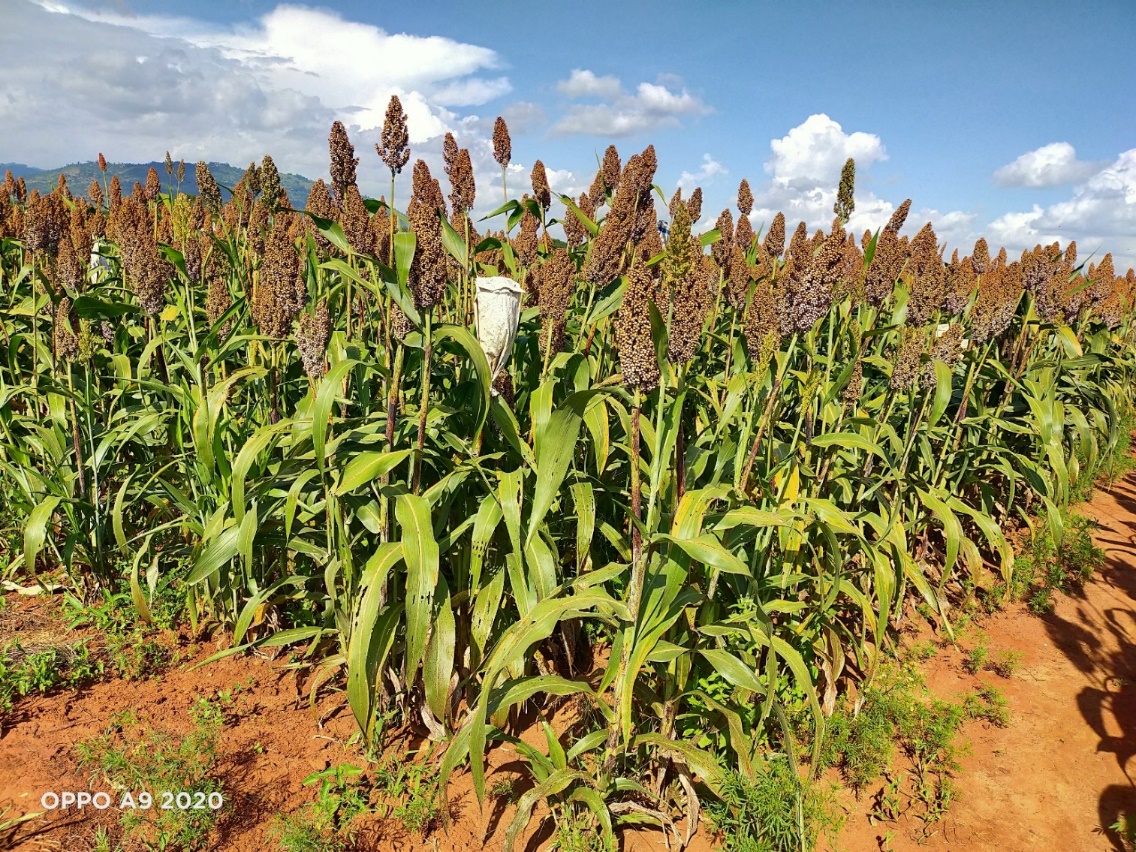
Serena (R. Kisilu 2021)
- Altitude suitability: 500-1750 m.a.s.l
- Yield1.4 tons per acre (2.7 t/ha) brown OPV sorghum variety.
- Early maturity of 3 months.
Attributes:
- wide adaptation to most regions with;
- Good bird tolerance levels
- Grain has good milling qualities

E97

- Altitude: 1000-1800 m.a.s.l
- Yield: 4-4.5 t/ha, matures in 90 days.
Attributes:
- It has tolerance to head smut disease.
- It is also drought tolerant and moderately tolerant to Striga weed.
- Tolerant to Aluminum toxicity and law levels of phosphorous in the soil.
BJ28
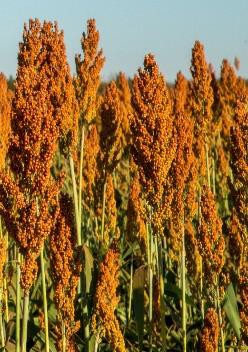
- Altitude suitability: 750-2300 m.a.s.l Maturity 110 days.
- The grain yield is 2.5-3 t/ha.
Attributes:
- An OPV variety, for grain (food) and forage.
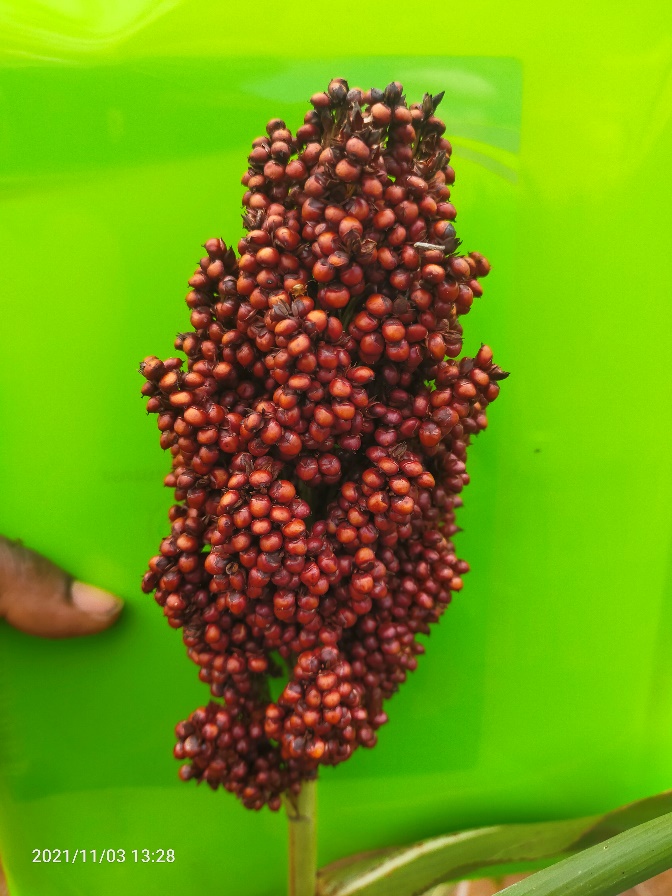
Variety Ikinyaluka (photo: R. Kisilu)
- Altitude: (750-2300 m asl).
- Yield: 4-8t per ha.
Attributes:
- It is well adapted to cold dry zones were most sorghum varieties fail.
- It is well known to farmers for fodder production, though takes 6 months.
Variety E6518
- Altitude Suitability: 750-2300 m.a.s.l
- Yield: (3.4 t/ha) and high quality fodder (7.2 t/ha).
Attributes:
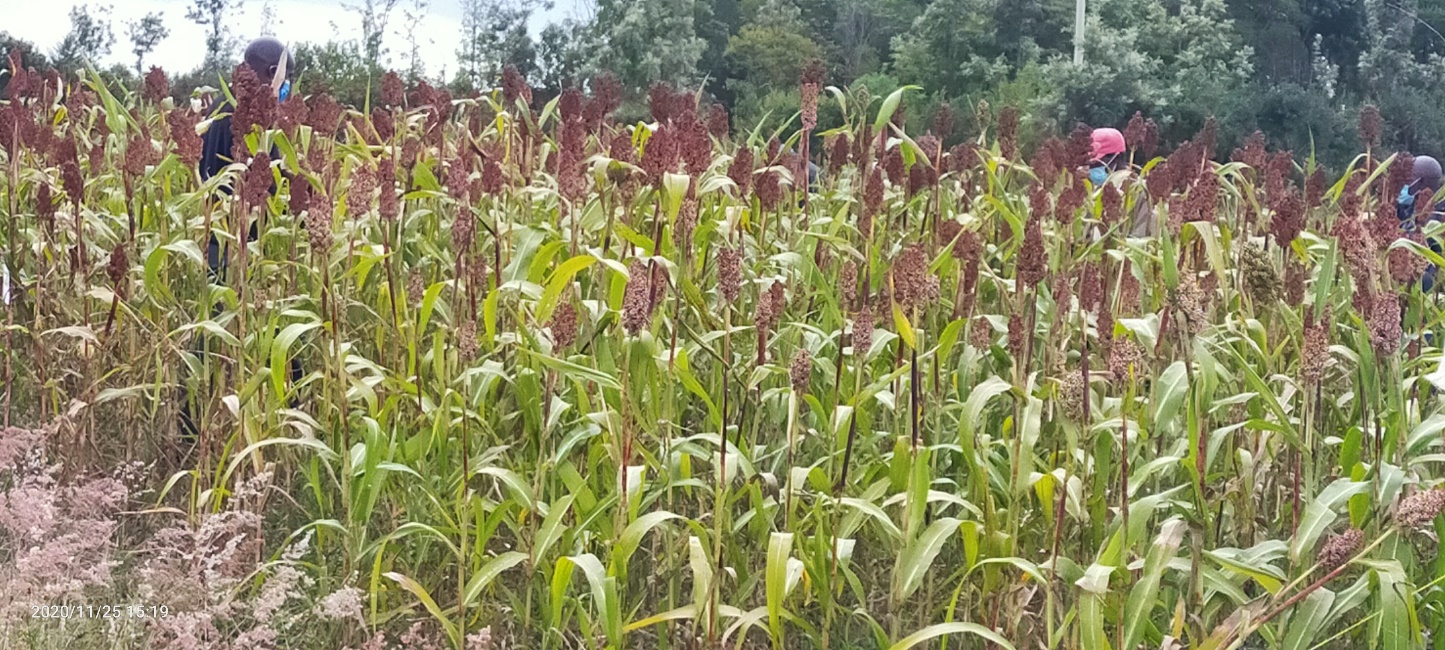
Variety E1291 (Photo: R. Kisilu 2021)
- Yield: grain (2.7 t/ha) and forage (2.7 t/ha).
Attributes:
- It is also good for sorghum beverage tea.
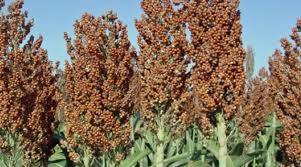
Sweet Sorghum 4
- Altitude: 250-1750 masl
- Grain yield of 2.9 t/ha and matures within 3 months.
Attributes
- Both for ethanol production and grain for consumption.
Sweet Sorghum 14
- Altitudes: 250-1750 m.a.s.l
- Yield of 2.9 t/ha, and matures within 3 months.
Attributes:
- It is used for ethanol production and grain for consumption.
Sweet Sorghum 17
- Altitude: of 250-1750 m.a.s.l
- Grain yield of 2.9 t/ha and matures within 3 months.
Attributes:
- It is used for ethanol production and grain for consumption.
Sweet Sorghum 21
- Altitude: of 250-1750 m.a.s.l
- Grain yield of 2.9 t/ha and matures within 3 months.
Attributes:
- It is used for ethanol production and grain for consumption.
Kak Sweet Sorghum 1
- Altitude suitability: 500 – 1800 m.a.s.l
- Grain yield of 2 t/ha, 16% Brix and 12% total Sugars.
Attributes:
- It matures within 4-5 months.
EUSS 10
- Altitude: 500-1750 m.a.s.l
Grain yield 1.3 t/ha, Stalk yield 40t/ha.
Attributes:
- suitable as feedstock and for ethanol.
- Stalk rich in fermentable sugars, and
- Ethanol yield is usually 644 L/ha.
EUSS 11
- Altitude:1200-1800 masl
- Grain yield 2.4 t/ha, stalk yield production is 44 t/ha.
Attributes:
- A sweet sorghum genotype as feedstock and for ethanol.
- Ethanol yield average is 838 L/ha
- Site for production, depends on the agro ecological suitability of variety, where rain seasons are punctuated by dry sunny days.
- Loam sandy soils provide best crop establishment and fast development.
- A fine bed tilth is important to make sure the small seed does not fail to grow where huge soil particles prevent penetration root and upward growth.
- All other agronomic practices follow the after land preparation.
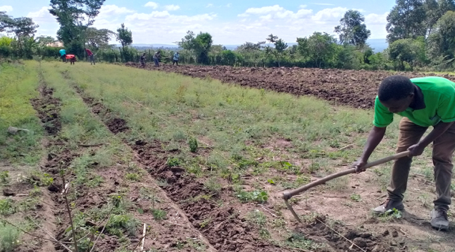
• Where necessary harrowing with tractor is important to achieve a fine tilth bed for ease of root establishment and water percolation.
Fertilizer management
- Initial fertilizer application is important to get potential crop yield in the presence optimum moisture conditions.
- Top dressing will be necessary to ensure crop development at vegetative stage and at flowering stage.
- NPK fertilizers with rations of N=20-24, P=9-11.5, K=4.5-7, including S, Mg, and Zn give the best combination ratio for sorghum production.
- Thus turns out to rate application of 75kg per acre at planting and 50kg per acre at topdressing. Topdressing fertilizer should be applied at knee-high crop height.
- At a seed rate of about 8-10 kilograms per acre is recommended for row planting with intra spacing of 25 cm per plant hill and 60cm apart from row to row.
- Where plant population occurs heavy latter thinning to 3 plants per hill in the 60cm x 25cm spacing could be adjusted.
- In the drier regions (less than 300mm per season) one to two plants per hill will enhance yields in the moisture strained conditions.
- In intercropping with legumes like green gram inter-row is reduced to 40cm for alternate rows of the two crops.
- Conservation Agriculture (CA) for sorghum production is practiced where rainfall amounts are likely to be below optimum of 420-630mm per season.
- Tied-ridge tillage by animal-driven plough or hand jembe ensures water around the plant bases.
- In the wetter regions, drainage troughs are constructed to get rid of extra water from the crop plot.
- Weeds are notorious as competitors of moisture and nutrients some Striga cause 100% yield loss.
- A pre-emergent herbicide three days before planting ensures a clean field to start with.
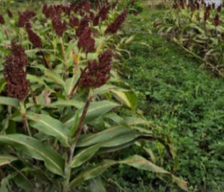
- Once crop is established oxen- driven ploughing between plant rows when plants are 4 to 6 leaves makes it easy to remove weeds early.
- After first weeding another more weeding is recommended just before flowering.
- Intercropping sorghum with legumes like cowpea or Desmodium to control Striga weed (farmbiz.com)
- Is important for highest yield return for sorghum crop. Below see yield increase for various varieties in Tharaka-Nithi County (source: A. Micheni, KALRO Embu 2019).
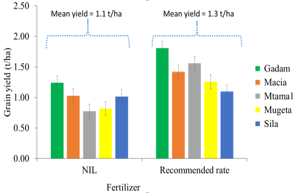
- Initial manure application at seed planting stage (at 2.5 tons per acre) would ensure nutrient assimilation.
- Apply fertilizer at the rate of 75kg per acre (NPK) at planting.
- Top dressing of 14-20kg per acre of CAN at late vegetative stage (just before flowering).
Pest management
- Major sorghum pests include fall armyworm, Spodoptera frugiperda (JE Smith), bollworm, Helicoverpa armigera (Hübner), shoot fly (Atherigona soccata) and various stalk borers
- An initial spray (of a systemic insecticide) at two weeks after crop emergence will ensure all caterpillars are eliminated and stopped from damaging crop at establishment
|
Pest type damage |
Control options |
|
Sorghum damage by Fall armyworm (Source: Kalro.org) |
|
|
|
|
|
Damage on sorghum Source: D. Mutisya 2016; 2021 |
|
- Yield reducing diseases like kernel (Sphacelotheca sorghi Clinton) and head smut (Sphacelotheca reiliana Clinton).
- The two diseases are common where no certified seed at time of planting.
- When other isolated plants are observed in the field hand removal and burying the affected plants deep (1/2metre) in soil prevent further spread of pathogens.
- Advice from extensions or KALRO could help to know how to manage emerging pests.
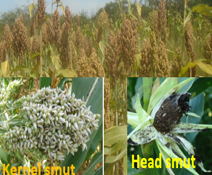
Diseased sorghum heads (panicles) of Kernel and Head smut
- Physiological maturity occurs when the grain gets hardening of the dough which can be confirmed by hand pressing to make sure kernels are beyond milk stage.
- Sorghum takes 75- 90 days to reach maturity. Early harvest means longer drying period for the grain.
- Time to harvest depend on variety maturity period and care is observed to make sure it saves on drying period.
Observation is made to make sure no presence of weevils on the panicles which would infest the grain further.
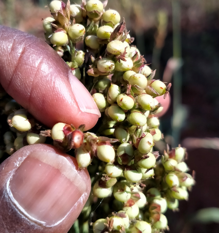
Determining the grain physiological maturity: Photo: D. Mutisya 2021)
- Early sorghum harvest to avoid bird damage
- The sorghum grain panicle is harvested when it becomes physiologically mature and dried in the sun away from possible damage by birds.
- The proof time to harvest is achieved when the weight and germination viability of grain is found not affected by the drying conditions.
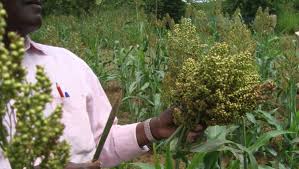
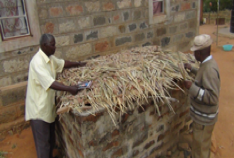
Harvesting sorghum kernels at soft dough stage and drying (photo; Mutisya 2016) www.kalro.org
- Safe grain handling at post-harvest include considerations for envisaged product to the market as grain or flour.
- Initial adequate drying of grain (12-13%) is important to prevent mycotoxin attack.
When sorghum grain is to be kept for long, safe storage insecticide could be applied as dust, otherwise hermetic bags can be used for safe human and animal consumption grain, but not for later planting.
- Again the grain storage package depends on the consideration for the final grain product.
- If the grain would be used for seed it ought to be insecticide dusted and kept in well aerated rooms.
Grain meant for flour product, ought to be kept in hermetic bags to avoid possible poisoning of food product.
- Various products can be achieved by value addition of the sorghum grain. Blends of sorghum with wheat at the ratio of 1:2 could achieve cottage products of bread, biscuits, buns, chapatti and crisps.
- Domestic recipes like Uji, Ugali, tea powders and sorghum popcorns can be prepared from the grain value additions.
|
Product |
Description |
|
Sorgum loaf bread |
|
|
Sorghum Ugali (D. Mutisya 2021) |
|
|
Marketing Systems |
|
|
|
|
- At different value chain of sorghum, various machines can be employed and used to achieve desired products.
- Right from crop production; land preparation, seeding/ planting to harvest, various machines can be used to increase volumes in the processes and remove drudgery in the operations.
- For agro industrial use of the grain, more machines are needed for milling and packaging.
- Overall machines use lead to increased efficiency in processes and products.
The traditional production operations (manual land preparation = 5,000, planting= 3,000, weeding = 6,000, harvesting = 4,000, post- harvest storage losses = 3,000, totaling KES, =21,000) to achieve 1.5 tons of yield per acre costs (KES) are higher than new TIMPs (tractor land preparation = 3,000, planting= 1,500, Oxen-plough weeding = 3,000, machine harvesting = 2,000, post- harvest storage losses = 1,000, totaling KES, =10,500). Thus the saved costs are half (KES, 10,500); of 50%, with estimated actual returns depending on the final value added products of flour or grain.
- Marketing channel depending on whether through organized aggregation groups or single farmer initiative’s.
- Where contact farming is hired by certain organization/ firm like East Africa Brewers (EALB) it turns more profitable than local market stalls.
- R. Kisilu and Kahiu Ngugi (2016). Sorghum Landraces Phenotypic Diversity in Kenya. Cutting-edge Research in Agricultural Sciences Vol. 10
https://doi.org/10.9734/bpi/cras/v10/8858D (Chapter 4 Print ISBN: 978-93-91215-16-3, eBook ISBN: 978-93-91215-17-0)
- R. Kisilu and Kahiu Ngugi (2016). Micro-satellite Diversity in Kenyan Sorghum Landraces, Cutting-edge Research in Agricultural Sciences Vol. 12.
https://doi.org/10.9734/bpi/cras/v12/8859D (Chapter 6 Print ISBN: 978-93-91473-71-6, eBook ISBN: 978-93-91473-76-1)
- Daniel L. Mutisya, David R. Karanja & Rachael K. Kisilu (2016). Economic advantage of sorghum harvest at soft dough to prevent bird damage. Cogent Food & Technology, 2: 1259141. http://dx.doi.org/10.1080/23311932.2016.1259141
- Daniel L. Mutisya, Canute P. M. Khamala, Jacob J. J. O. Konyango, Clement K. Kamau & Lawrence K. Matolo (2016). Timed Strategy for Control of Bollworm for Sustainable Sorghum Crop Yield under Varied Regimes of Rainfall, Temperature and Soil Fertility. Sustainable Agriculture Research, 5(4): 71-80. http://dx.doi.org/10.5539/sar.v5n4p71
Reference: https://www.kalro.org/amri/?q=node/106
Kenya Agricultural and Livestock Research Organization
P.O. Box 57811-00200, Nairobi, Kenya
Call: 0111010100
